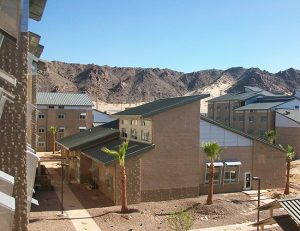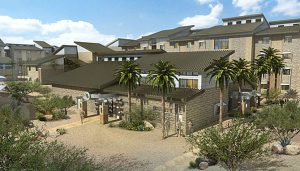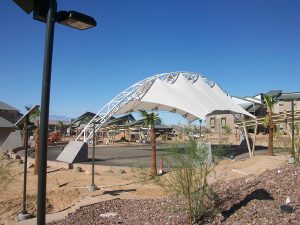Naval Facilities Engineering Command Quality of Life Facilities Package 4 (QOL 4)
TWENTYNINE PALMS, CA [2011-2013]
 As the Defense Department has stated, sustainability and security are highly compatible missions because savings achieved through sustainable practices allow resource reallocation to areas directly supporting prime war-fighting objectives. The Quality of Life Package 4 (QOL 4) broke ground April, 2012. It is a $80 million complex including another three 4-story BEQs (each with a 9,825 SF multi-purpose building), a 445-seat dining facility, a 500-seat open-air amphitheater, a 540-space parking garage and a 420’ Ninja Warrior style obstacle course. The project was completed in June, 2013 and attained LEED Gold certification later that year.
As the Defense Department has stated, sustainability and security are highly compatible missions because savings achieved through sustainable practices allow resource reallocation to areas directly supporting prime war-fighting objectives. The Quality of Life Package 4 (QOL 4) broke ground April, 2012. It is a $80 million complex including another three 4-story BEQs (each with a 9,825 SF multi-purpose building), a 445-seat dining facility, a 500-seat open-air amphitheater, a 540-space parking garage and a 420’ Ninja Warrior style obstacle course. The project was completed in June, 2013 and attained LEED Gold certification later that year.
 This project was developed under consecutive contracts awarded by the Naval Facilities Engineering Command (NAVFAC) Southwest to Straub-Martin Harris of Fallbrook, CA (a joint venture of Straub Construction, Fallbrook, CA, and Martin Harris Construction, Las Vegas, NV). PGAL serves as prime architect. Coda Group, formerly Sellen Sustainability served as the project sustainability consultant, assisting the design and construction team to achieve the goal of LEED certification and Net Zero Ready.
This project was developed under consecutive contracts awarded by the Naval Facilities Engineering Command (NAVFAC) Southwest to Straub-Martin Harris of Fallbrook, CA (a joint venture of Straub Construction, Fallbrook, CA, and Martin Harris Construction, Las Vegas, NV). PGAL serves as prime architect. Coda Group, formerly Sellen Sustainability served as the project sustainability consultant, assisting the design and construction team to achieve the goal of LEED certification and Net Zero Ready.
 The project was designed and constructed to achieve Net Zero when and if funds are available to expand the photovoltaic capacity. It is much less expensive to retrofit buildings to full Net Zero when buildings are originally designed as Net Zero Ready with highly efficient systems and exterior envelopes using a Whole Building approach.
The project was designed and constructed to achieve Net Zero when and if funds are available to expand the photovoltaic capacity. It is much less expensive to retrofit buildings to full Net Zero when buildings are originally designed as Net Zero Ready with highly efficient systems and exterior envelopes using a Whole Building approach.
To address the 2009 Marine Corps BEQ Enhancement Initiative to provide a “more home-like living environment for single Marines” with high quality, durable, sustainable materials. Betterments provided by the JV team for QOL4 include a 10% increase in room size and numerous material/finish and energy-efficiency upgrades. The project has 576 two-person rooms sporting vibrant colors, creative storage, kitchenettes and double-sink baths.
Criteria for selecting green elements include cost efficiency, impact on design and contribution to net zero ready. Once example of the green elements include window interlock systems that shut off fan coil units when windows are opened, perforated metal exterior sunshades with vertical fins to cut off low angle morning and afternoon solar heat gain, native, drought-tolerant landscaping is irrigated with subsurface drip irrigation to minimize evaporation. 100% of the landscape irrigation is provided through a graywater filtration system which supplies non-potable water recovered from the buildings’ laundry facility.
*Coda served as the project LEED consultant, PGAL Architect of Record
